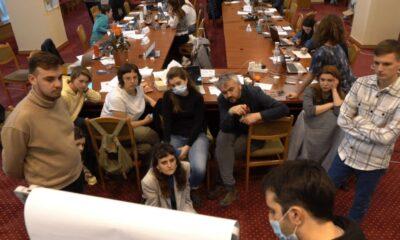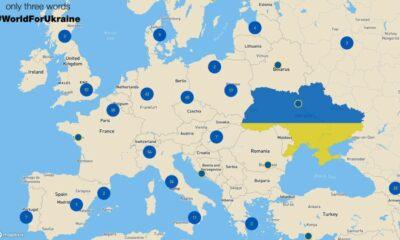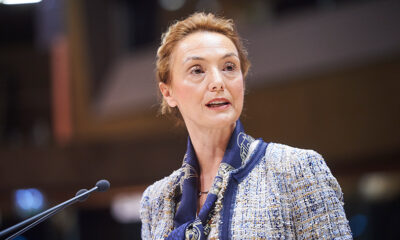Economy
Consumer Spending Decline to Intensify Russian Economic Problems
Reading Time: 4 minutesRussia’s already troubled economy is likely to take another hit later this fall when consumers exhaust most of their reserves and significantly cut back their spending, according to Vladimir Milov, the president of the Moscow Institute of Energy Policy and a member of the opposition Solidarity Movement.
By Paul Goble
Russia’s already troubled economy is likely to take another hit later this fall when consumers exhaust most of their reserves and significantly cut back their spending, according to Vladimir Milov, the president of the Moscow Institute of Energy Policy and a member of the opposition Solidarity Movement.
The current economic downtown, he points out, is universally recognized to be the result of declining energy prices and problems in the economies of Russia’s trading partners, but it would now be worse if Russian consumers were not continuing to spend at nearly the levels they were earlier (www.nr2.ru/ekb/235931.html).
Russian consumers have done so at the urging of Prime Minister Vladimir Putin who has argued that the current crisis will be relatively short by drawing down their savings, but those reserves will be largely gone by this fall, Milov says. And as a result, a decline in consumer spending will deliver a second hit to the Russian economy.
Just how large a hit that will be remains uncertain. On the one hand, Russian consumers already have cut back. And on the other, consumer spending constitutes a far smaller percentage of Russia’s GDP than it does elsewhere. In the US, for example, it forms 70 percent of GDP, while in Russia, it is now under 40 percent (soundmoneytips.com/user/317799/comments).
In an interview with the New Region news agency, Milov underscored the differences between the current crisis, which reflects first and foremost the decline in the price of oil and gas and the fall-off in foreign investment, and the looming one, which will be driven by and reflect declines in consumption.
“At present,” he said, “people are attempting to preserve their old level of consumption,” drawing on their savings given the encouragement of the government that things will begin to get better in 2010. Indeed, Milov noted, Putin has told Russians, “’consume just as you did; we will support you.”
But as the population draws down its savings and as other problems hit, including the introduction of anti-dumping measures by China that will hit Russia’s metallurgy industry and declining investment from abroad, he continued, it is obvious that the decline will outlast consumer savings and that when they end, the Russian economy will take another serious hit.
In Milov’s view, the Russian government not only has been disingenuous in its discussion of these problems but also has adopted policies that have failed to address them. First, it has tried to save the banking system while not worrying nearly as much as it should about the real sector of the economy on which most people depend more directly.
Second, he argued, the government’s support of key economic figures – the oligarchs – has not led to a real improvement of the situation of the population even if it has calmed these powerful people. And third, the government has put money in the Russian stock market to try to stabilize that, taking huge losses as President Dmitry Medvedev conceded last month.
Because of these and other failures, Milov said, Moscow is going to face more crises like the one in Pikalevo, which attracted so much attention after Putin visited that company town near St. Petersburg in response to worker protests over plant closings. In time, it is likely that Moscow will have to use the security forces rather than money to try to keep order.
Indeed, the Solidarity leader concluded, “the economic and social instability in Russia will stretch out over the next five years,” given that foreign investors will not return to the Russian Federation given that “political risks” in Russia are much higher than they are in many other countries like Brazil or China.
Because the political system in Russia is increasingly closed, Milov said, “the powers that be have been weakened and fulfill their obligations ineffectively, allowing for too many mistakes. The situation can be changed only by political competition and free discussion, arrangements that always work in favor of the economy.”
But there is one indication that declines in consumer spending in Russia in the coming months may have even more dramatic social and political consequences than Milov suggested. According to a commentary by Ivan Yartsev this week, Russia is once again, under current conditions, not in a position to feed itself (www.politcom.ru/8304.html).
Although overall imports have fallen in Russia by more than 40 percent since the start of 2009, he noted, spending on food imports has increased “almost ten percent,” a pattern that suggests “Russian producers are not in a position to work in crisis conditions and satisfy the [already lowered] demand of the population.”
“Unlike in 1998” – the year of default – “one is not talking about import substitution.” Instead, “Russians are simply beginning to consume less, and the domestic food producers are producing less.” For the latter, “the current crisis [unlike the one a decade ago] has not become ‘a window of opportunities.’"
Because of that and because imported food is typically more expensive than domestically produced food, Russians forced to cut back on their consumption this fall may have to cut back in an area their government has been assuring them is not a problem that they need to worry about.
At the very least, the challenge of providing enough food to Russian consumers – and especially those in small cities and rural areas far from Moscow – will force the government to divert resources from other areas lest it face the politically unpalatable and, for Russians, historically loaded option of having to suppress protests by hungry people.
Economy
Moldova will receive a disbursement of 36 million euros as part of the the Economic Recovery Plan
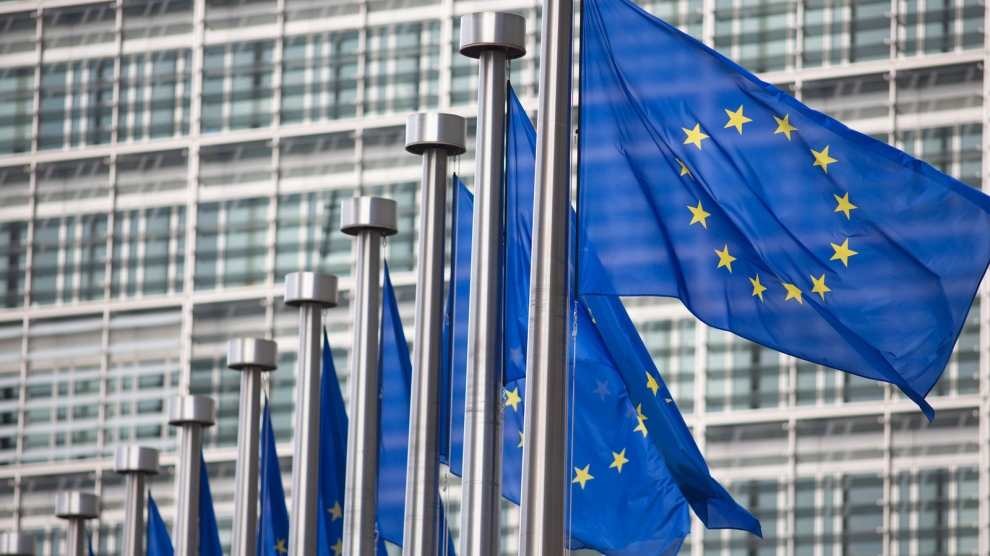
This week, the European Commission approved the disbursement of 36 million euros in grant money for the Republic of Moldova. The announcement was made by Deputy Director-General for Neighbourhood Policy and Enlargement Negotiations at the European Commission, Katarina Mathernova, who paid an official visit to the Republic of Moldova between September 13-15, together with Managing Director for Russia, Eastern Partnership, Central Asia, Regional cooperation and OSCE, at the European External Action Service, Michael Siebert.
The EU officials had meetings with President Maia Sandu, Minister of Foreign Affairs and European Integration, Nicu Popescu, Speaker of Parliament, Igor Grosu, Prime Minister of the country, Natalia Gavrilita, as well as key representatives of Government, international financial institutions and the civil society, according to a press release issued by the Delegation of the European Union to the Republic of Moldova.
Beside such topics as the EU-Moldova relations and prospects, the priorities of the reform agenda of the new Moldovan Government, preparations for the Eastern Partnership Summit at the end of the year and the Transnistrian conflict settlement, the officials also discussed the EU assistance in support of reforms and the Economic Recovery Plan for Moldova, which was announced in June with a total EU support of 600 million euros over the next 3 years.
“The first measures under the Economic Recovery Plan will shortly materialize, with the expected disbursement of 36 million euros in grant money under budget support programmes to support the authorities’ efforts to fight against the consequences of the pandemic. Moldova can count on EU’s assistance on its path to reforms and to recovery, bringing tangible results to citizens,” Katarina Mathernova stated.
The plan is based on assistance provided by the European Union through various bilateral and regional instruments, aiming to mobilize the funds in the form of grants, loans, guarantees and macro-financial assistance.
“The Economic Recovery Plan for the Republic of Moldova involves much more, not just this financial support provided immediately. It must help digital transformation, strengthen infrastructure, energy efficiency, education and support small and medium-sized enterprises,” the EU official also said.
As Prime Minister Natalia Gavrilita informed, “The Economic Recovery Plan and the 5 flagship initiatives for Moldova in the Eastern Partnership will directly contribute to the reform and consolidation of institutions, stimulate long-term socio-economic development, bring direct benefits to citizens, and unleash new economic opportunities through promoting the green agenda and digitization. Small and medium-sized enterprises (SMEs) have been hit hard by the crisis. Promoting and diversifying access to finance and reducing collateral requirements will be essential in supporting economic operators. We are grateful to the EU partners who will launch two programs to support 50 000 independent Moldovan SMEs to adapt to the new conditions.”
President of the Republic of Moldova, Maia Sandu, welcomed the decision of the European Union to disburse about 745 million lei in grant money, as the official page of the President’s Office announced. “EU support comes after a long period of freezing of European assistance, caused by former governments. We managed to relaunch the political dialogue with the European Union and resume financial assistance. The Republic of Moldova is gradually regaining the trust of its strategic partners. This European support is also a signal of encouragement for the new Government team in its commitment to clean up the institutions, fight corruption and launch development programs in the country,” said Maia Sandu.
Photo: unknown
Economy
Romania and Moldova signed a partnership memorandum pledging to cooperate in promoting their wines

The Chamber of Commerce and Industry of Romania (CCIR) and the National Office for Vine and Wine (NOVW) of the Republic of Moldova signed, last week, a memorandum of cooperation on organizing joint promotional activities in the markets of common interest, as the CCIR announced.
China, Japan or the USA are just some of the markets targeted by the Romanian and Moldovan institutions. The memorandum also involves advertising activities for wines from common indigenous varieties, promoting the oeno-tourist region, developing a tourist route in the two states, exchange of experience, study visits, and mutual support in identifying new export opportunities. “We are very confident that this collaboration between our organizations will lead to sustainable economic growth and a higher degree of well-being among Moldovans and Romanians,” claimed Deputy Secretary-General of CCIR, Bogdan Visan.
On the other hand, Director of the NOVW, Cristina Frolov, declared that no open competition with Romania is aimed at the governmental level of the Republic of Moldova. “This request for collaboration is a consequence of the partnership principle. Romania imports 10-12% of the wine it consumes, and we want to take more from this import quota. Every year, the Romanian market grows by approximately 2.8%, as it happened in 2020, and we are interested in taking a maximum share of this percentage of imported wines without entering into direct competition with the Romanian producer,” the Moldovan official said. She also mentioned that Moldova aims at increasing the market share of wine production by at least 50% compared to 2020, and the number of producers present on the Romanian market – by at least 40%.
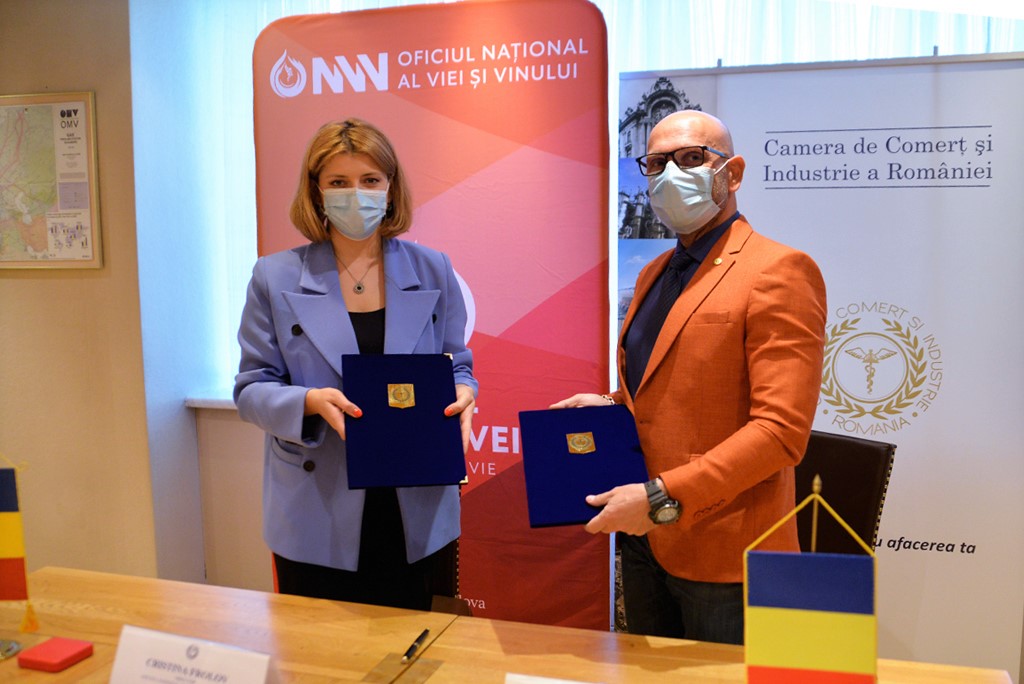
Source: ccir.ro
**
According to the data of the Romanian National Trade Register Office, the total value of Romania-Moldova trade was 1.7 billion euros at the end of last year and over 805 million euros at the end of May 2021. In July 2021, there were 6 522 companies from the Republic of Moldova in Romania, with a total capital value of 45.9 million euros.
The data of Moldova’s National Office of Vine and Wine showed that, in the first 7 months of 2021, the total quantity of bottled wine was about 27 million litres (registering an increase of 10% as compared to the same period last year), with a value of more than one billion lei, which is 32% more than the same period last year. Moldovan wines were awarded 956 medals at 32 international competitions in 2020.
Photo: ccir.ro
Economy
Moldova’s hope to be a top walnut exporter and its main difficulties

The Republic of Moldova has perfect weather conditions for growing walnut trees, that creating a great potential of walnut production and trade, especially on international markets, where the demand is way higher than the product’s supply. National and international experts believe that the country’s walnut production industry is on the verge of important transformations, which could lead to increased yields, quality and competitiveness worldwide.
According to authorities, Moldova exports 34-35 thousand tons of walnuts in shell, which is about 7% of the total export of fruit and 5% of the total export of horticultural products. The export value is assessed as being $120 million, that being 57-60% of the total fruit export value and about 50% of horticultural export value. Most of walnut crops are exported to the EU countries, such as France, Germany, the Netherlands, Romania and Austria. The country’s exports were among the world’s top 10 when it comes to the highest dollar value of the product during 2020.
Viorel Gherciu, Minister of Agriculture and Food Industry, pointed out that the production in the domestic walnut industry has increased by 55% in the last five years, which ranks Moldova among the main producers in the world.
“The biggest opportunity for this industry is that we are in the geographical proximity of the largest walnut import area in the world, which is the European Union, with almost 40% of total imports in the world. We are on the EU border, with privileged relations, with an Association Agreement. We already enjoy a good relationship in working with European importers, they trust our processors. A very close collaboration has been created and this is, in fact, the guarantee for those who invest in the area,” claimed the president of the Walnut Producers Association, Oleg Tirsina.
The data provided by the National Bureau of Statistics show that there are 34.7 thousand hectares of walnut plantations in the country. 20.90 hectares are represented by orchards. 75% of planted orchards are formed of old varieties trees. 30-35% of the exported production comes from orchards, the rest comes from individual farmers and plantations along the roads. This means that the quality of walnut production is not at its maximum potential. Developing commercial plantations through orchards modernization and extension of walnut varieties would provide double yield and better quality, experts say.
Governmental support in the form of subsidizing solutions, foreign investments and credit options are indispensable for the industry development. One of the financing options is the credit line of the European Investment Bank Project. Since 2016, 15 producers and processors of nuts, almonds and hazelnuts have benefited from these loans with the total amount of investments worth 8.7 million euros. A further extension of the project would provide another 60 million euros for the modernization of the horticultural sector in general and for harvesting organic walnuts in particular.
Photo: heymoldova.com


